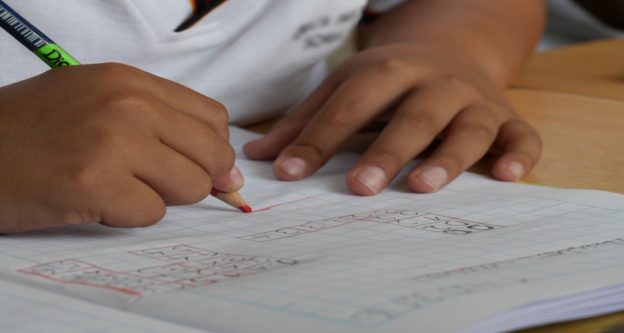It is a fact, to master most math skills students need to practice the skill multiple times. As any teacher knows, this is much easier said than done. Struggling students rarely have the self-motivation to practice a challenging math skill until they can complete that skill fluently. While there is a time and a place for the completion of problems on paper, I have yet to find students that enjoy completing worksheets.

My advice–ditch the worksheets and bring on the games. A quick search online will generate lists of all sorts games that your students will enjoy playing. The best part, while they are playing, they are also practicing, and better yet, mastering a variety of math skills.
When choosing a math game, think about the skill or skills you want it to address. In addition, I like to choose games that help develop critical thinking. To achieve this, I make sure the game not only practices a skill, but students will also need to think deeply about how to successfully play, and ultimately, win the game.

In today’s post, I want to share a student favorite I like to call, for no reason in particular other than it catches everyone’s attention, “Sauerkraut”. I particularly like this game, because the skills practiced can be easily varied and the difficulty can be adjusted too.
Sauerkraut
PLACE VALUE (2 – 4 players)
Materials: 1 deck of playing cards, 1 die, sheet of graph paper for each player

Begin by removing kings, queens, jacks, tens and jokers from the deck of playing cards. Remaining cards are placed in a stack, face down in the center. Each player then takes 4 cards from the top of the deck and turns them over. One student rolls the die, if the die lands on an even number, students are to build the largest number possible using only the 4 cards the drew. If the die lands on an odd number, students are to build the smallest number. Each student records their number on their graph paper. The student creating either the largest or smallest number earns 2 points. This game can be varied, by having the students draw varying amounts of cards depending on the age of the students. It should be noted that Aces have a value of 1.

A variation on this game is to have students create numbers that are divisible by the number rolled on the die. Playing the game this way, students are practicing their divisibility rules. In this variation, rolling a 1 on the die, students would try to create a number be divisible by 10.

MULTIPLE DIGIT MULTIPLICATION (2 – 4 players)
Materials: 1 deck of playing cards, 1 die, sheet of graph paper for each player
Begin by removing kings, queens, jacks, tens and jokers from the deck of playing cards. Remaining cards are placed in a stack, face down in the center. Each player then takes 4 cards from the top of the deck and turns them over. One student rolls the die, if the die lands on an even number, students are to build a 3-digit multiplied by a single-digit that has the largest product. If the die lands on an odd number, students are to build a 3-digit multiplied by a single-digit that has the smallest product. Each student records their equation on their graph paper. The student then solves to find the product. The student creating either the largest or smallest product earns 2 points. In addition, students may ask each other to prove their answer. If the product is incorrect, the student challenging collects the 2 points. This game can be varied, by having the students draw varying amounts of cards depending on the age of the students. It should be noted that Aces have a value of 1.

I particularly like this version of the game, because students often assume using the card with the largest value is the best one to use as the single-digit factor. Many soon realize, however, that isn’t necessarily the case. Cue the critical thinking skills I mentioned earlier.
The beauty, as I said earlier, is that you can vary this game in a variety of ways…multiply a three-digit number by a two-digit number, etc. Oh, and it works with division too!

